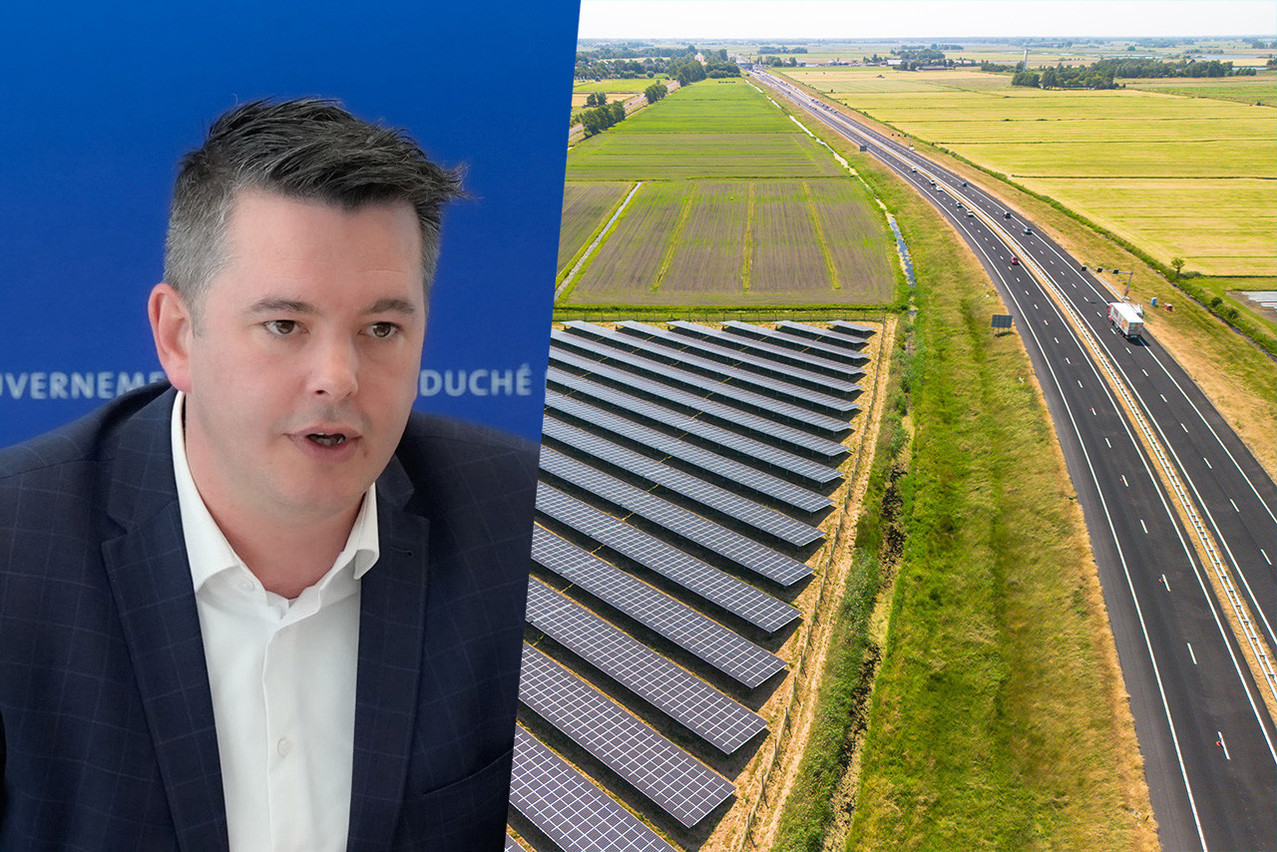“We know that there is a cumulative potential for installable power of around 1,500 megawatts along the A3 motorway, which links Luxembourg city to France, if we install photovoltaic panels there,” said economy minister (DP) on 16 May 2025. “But this figure is theoretical; we don’t want to have corridors of panels all along the motorway.” Standing alongside environment minister (CSV), Delles explained to the press the government’s 51 measures relating to renewable energy, following the State of the Nation address by the prime minister (CSV) on 13 May. By way of comparison, 2024 was the first year in which additional capacity exceeded the 100 megawatt threshold, with a total of almost 160 megawatts installed, according to the latest figures unveiled by Serge Wilmes.
One of the most significant measures, and one that contrasts with the past, is that the government is prepared to maximise the use of available space, including the continuation of Agri-PV, the development of areas along motorways and moving wind turbines closer to roads and business parks. “The transport ministry will shortly be tabling a bill to authorise the installation of photovoltaic panels in the non ædificandi zone, i.e. in the 25 metres behind the motorway safety zone, which is currently impossible,” said Delles.
The state will lease its land to operators
The idea is therefore not to see motorway verges continuously adorned with photovoltaic panels or wind turbines, but to make the most of these available spaces when they are owned by the state. So who will own the energy produced? “Not the government,” said the minister. “The Luxembourg state is not going to install them itself--the idea is to lease the land and put out a call for tenders and see what the operators come up with.”
The government is relying on the feasibility study launched by the economy ministry, in collaboration with the transport ministry, to assess the photovoltaic potential along Luxembourg’s motorways, the first part of which was presented last September.
This study mentions, for example, the installation of noise barriers or solar fences along the A3-widening worksite, the installation of ground-based photovoltaic power stations on vacant land between the motorway and the new Luxembourg-Bettembourg railway line, and the mobilisation of public or private land outside the motorway up to a distance of 200 metres.
A subsidy for batteries
The 51 measures presented on 16 May are divided into five main parts: simplified and digitised procedures, the mobilisation of surface areas--mentioned above--citizen participation and the role of local authorities, increased financial aid and the reinforcement of the electricity network. The ministers stated that more than half of the measures (26 of the 51) will be introduced, in full or in part, in a legislative or regulatory procedure, or implemented before the summer of 2025.
In the review of Klimabonus support, it was decided in particular to introduce a new subsidy for batteries for existing photovoltaic installations. “Until now, you could only get a subsidy for a battery if you bought photovoltaic panels at the same time. With this new subsidy, it will be possible to benefit from it for the batteries separately,” said Delles.
This article in French.
